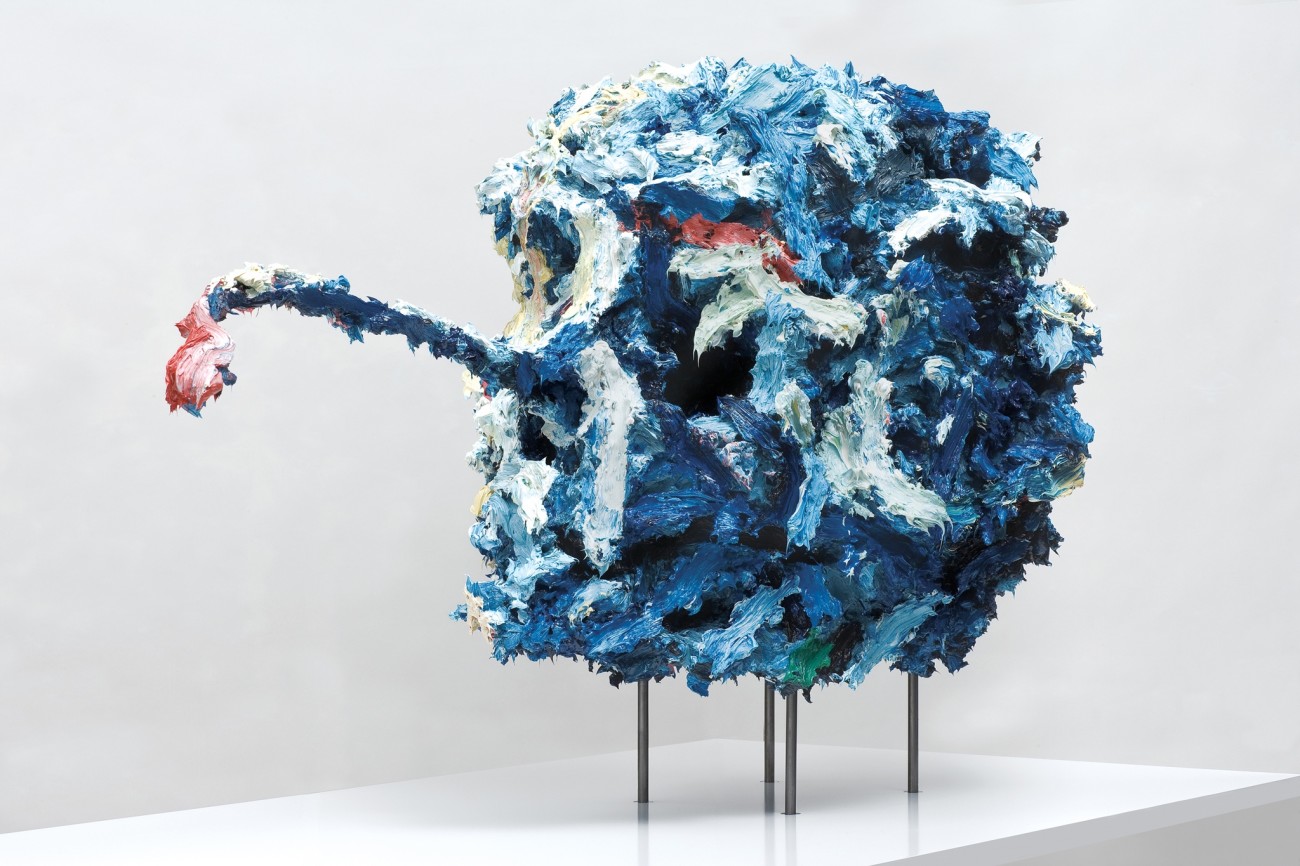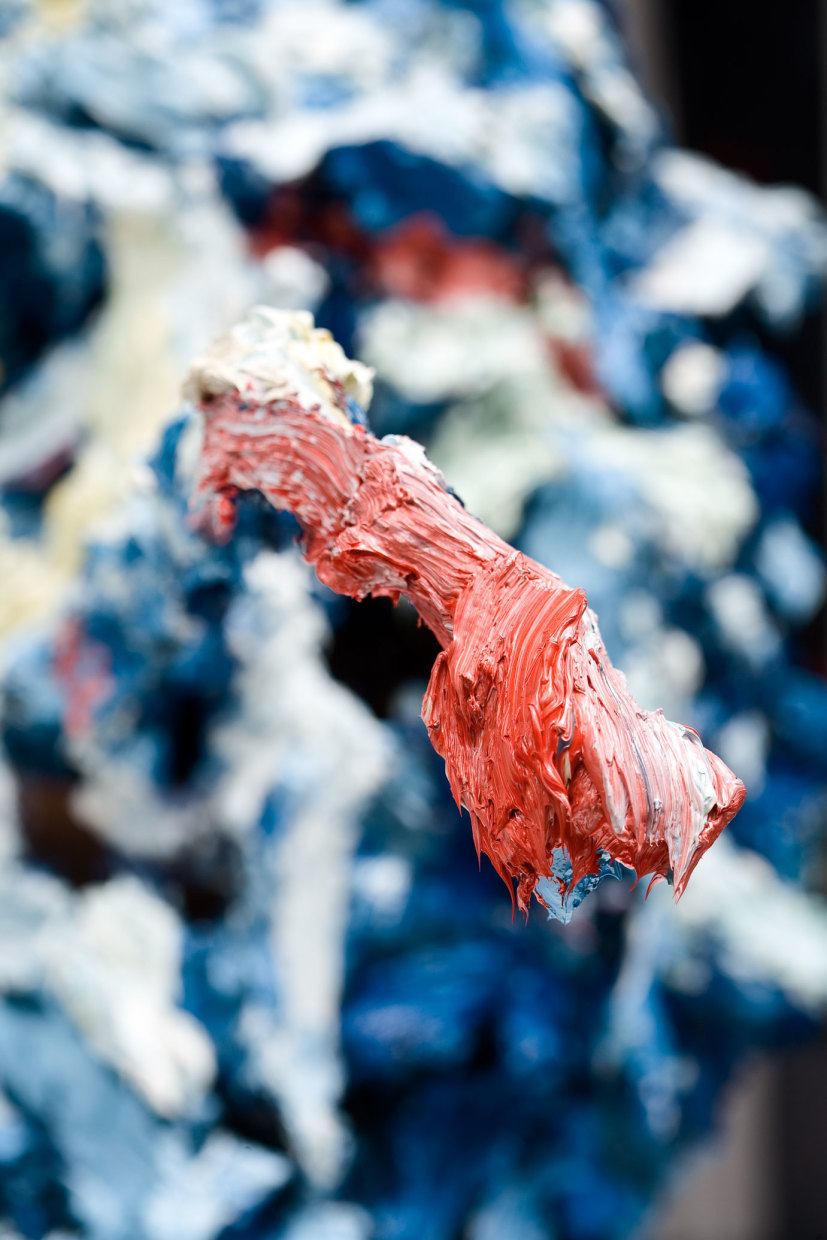The Brown Collection: 1 Bentinck Mews, Marylebone, London W1U 2AF
As opposed to his wall paintings that are smooth enough to resemble prints, Brown’s sculptures are thickly caked with oil paint which he applies over long durations with a paintbrush. Compelled by the question of how much paint he could layer upon a surface, Brown begins each three-dimensional painting with either a bronze statuette or simple wire armature. In the case of Wooden Heart it took him almost two years to lay a base of acrylic paint, followed by chunky masses of oil paint and their lengthy drying times. This particular work is modeled after The Nose (1947) by Swiss sculptor Alberto Giacommeti (1901-1966), in which the artist suspends a bronze head with a Pinocchio-like nose from a cross bar in a rectangular cage. In so doing, Giacommeti implies that the pendant head could be prodded to swing, with the nose further extending beyond the confines of its prison. There is a vague threat in the shape of the head as the configuration of nose, skull, and neck recalls the barrel, chassis, and handle of a gun. However, the gaping mouth suggests a scream of anguish, and the cord attaching it to its cage evokes the gallows. As such, The Nose reflects French writer Jean-Paul Sartre’s (1905-1980) post-war existential angst (a friend of Giacommeti), and makes a mischievous bridge to the title of this work – Wooden Heart – a song performed by Elvis Presley for his 1960 film G.I. Blues. This song is based on a German folk song by Friedrich Silcher, and Presley’s version features two verses in German before transitioning to an English translation. The lines "Sei mir gut, sei mir gut, sei mir wie du wirklich sollst, wie du wirklich sollst...", are especially notable, as they translate to, "Be good to me, Be good to me, Be to me how you really should, How you really should..."
– Steven Matijcio, Curator, Contemporary Arts Center, Cincinnati, USA
[Parts of this text cited from the Guggenheim Museum website]


